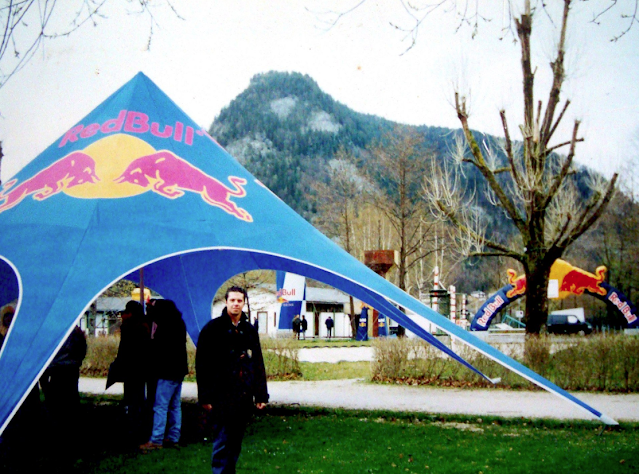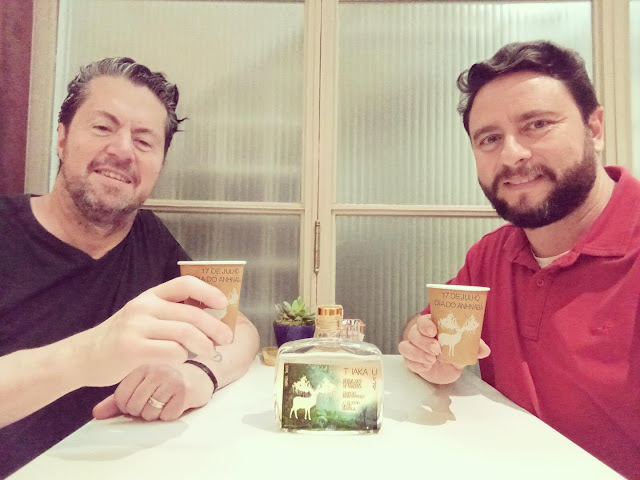2.11 – General Conclusion
We are very grateful and pleased to present the Cauim Project.
We believe that this initiative has the potential to generate significant benefits for Brazilian culture, promoting the sustainable development of the communities involved and, at the same time, opening new market opportunities in the gastronomic sector.
We thank everyone who dedicated their time to learn more about the project and we are entirely available to investors and stakeholders who wish to join us in this endeavor. We believe that, together, we can turn this idea into reality, strengthening indigenous culture and contributing too social and economic development of the country.
Bibliographic References
AGUIRRE, M.; COLLINS, M. D. Bactérias do ácido láctico e infecção clínica humana. Journal of Applied Bacteriology, Oxford, v. 75, n. 2, pág. 95-107, agosto de 1993.
Achrol, R.S., Reve, T. e Stern, L.W. (1983), "The Environment of Marketing Channel Dyads: A Framework for Comparative Analysis," Journal of Marketing, vol. 47 (outono) 55-67.
ALBUQUERQUE, M. A mandioca na Amazônia. Belém: Ministério do Interior, 227 p. 1969
ALMEIDA, E. G.; RACHID, C. C. T. C.; SCHWAN, R. F. Microbial population present in fermented beverage ‘cauim’ produced by Brazilian
Arndt, J. (1976), "Reflections on Research in Consumer Behavior," in B.B.
Anderson (ed.), Advances in Consumer Research III, Chicago, Association for Consumer Research, 213-221.
Asch, S.E. (1953), "The Effects of Group Pressure Upon the Modification and Distortion of Judgments," in D. Cartwright and A. Zanders (ed.), Group Dynamics, New York, Harper and Row.
Assael, H. (1984), Consumer Behavior and Marketing Action, Boston, Mass., Kent Publishing Co. (2nd ed.)
BARNETT, J. A.; PAYNE, R. W.; YARROW, D. Yeast: characteristic and identification. 3. ed. Cambridge: Cambridge, 2000. 1139 p.
Belk, R.W. (1975), "Situational Variables and Consumer Behavior," Journal of Consumer Research, Vol. 2 (December) 157-164.
Belk, R.W., Bahn, K.D. and Mayer, R.N. (1982), "Developmental Recognition of Consumption Symbolism," Journal of Consumer Research, Vol. 9 (June) 4-17.
Berelson, B., and Steiner, G.A. (1964), Human Behavior: An Inventory of Scientific Findings, New York, Harcourt, Brace and World, Inc.
Berry, J.W. (1980), "Acculturation as Varieties of Acculturation," in A.M. Padilla (ed.), Acculturation, Theory, Models and Some New Findings, Boulder, Colorado, Westview Press, 9-25.
BEG, Q. K.; GUPTA, R. Purification and characterization of an oxidation- stable, tiol-dependent serine alkaline protease from Bacillus mojavensis. Enzyme and Microbial Technology, New York, v. 32, n. 2, 294-304, Feb. 2003.
BERWANGER, A. L. S.; SCAMPARINI, A. R. P.; DOMINGUES, N. M.; VANZO, L. T.; TREICHEL, H.; PADILHA, F. F. Biopolymer production synthetized by Sphingomonas capsulata, using industrial media. Ciência e Agrotecnologia, Lavras, v. 31, n. 1, p. 177-183, jan./fev. 2007.
BIVANCO, F. C.; MACHADO, C. A. S.; MARTINS, E. L. Criptococose cutânea. Arquivos Médicos do ABC, Santo Andre, v. 31, n. 2, p. 102-109, jul./dez. 2006.
BASIC LOCAL ALIGNMENT SEARCH TOOL. Bethesda, 2009. Disponível em: <http://www.ncbi.nlm.nih.gov/BLAST/>. Acessado em: 5 fev. 2010.
BOCKELMANN, W.; HELLER, M.; HELLE, K. J. Identification of yeasts of dairy origin by amplified ribossomal DNA restriction analysis (ARDRA). International Dairy Journal, Barking, v. 18, n. 10/11, p. 1066-1071, Oct./Nov. 2008.
BOTES, A.; TODOROV, S. D.; MOLLENDORFF, J. W. von; BOTHA, A.; DICKS, L. M. T. Identification of lactic acid bacteria and yeast from boza. Process
Biochemistry, London, v. 42, n. 2, p. 267-270, Feb. 2007.
Boyd, H.W. and Levy, S.J. (1963), "New Dimensions in Consumer Analysis," Harvard Business Review, Vol. 41, 129-140
Bureau of the Census (1987), Statistical Abstract of the U.S., (107th ed.), Washington, D.C., U.S. Department of Commerce.
Castanho, Thiago (2014), Coziha de Origem, Publi Folha (1a. ed.)
Coleman, J. (1961), The Adolescent Society, New York, The Free Press.
Coleman, J. (1988), "Social Capital in the Creation of Human Capital," American
Journal of Sociology, Vol. 94, Supplement, S95-S120.
Endicott, C (1984), "Making the Most of Media," Advertising Age (March 19) 20-22.
Fuat, F.A. and Dholakia, N. (1982), "Consumption Choices at the Macro Level," Journal of Macromarketing, Vol. 4 (Fall) 6-15.
Furnham, A. and Bouchner, S. (1986), Cultural Shock: Psychological Reactions to Unfamiliar Environments, London, Methuen.
Goffman, E. (1959), The Presentation of Self in Everyday Life, Garden City, New York, Doubleday.
Gr°nhaug, K. and Venkatesh, A. (1987), "Products and Services in the Perspective of Consumer Socialization," European Journal of Marketing, Vol. 20, No. 10, 55-65.
Gr°nhaug, K. and Dholakia, N. (1987), "Consumers, Markets and Supply Systems: A Perspective on Marketization and Its Effects," in F.A. Fuat, N. Dholakia and R.P. Bagozzi (eds.), Philosophical and Radical Thoughts in Marketing, Lexington, Mass., Lexington Books.
Guernica, A. (1980), Reaching the Hispanic Market Effectively, New York, McGraw-Hill.
Hall, E.T. (1976), Beyond Culture, Garden City, New York, Anchor Press/Doubleday.
Hofstede, G. (1984), Culture's Consequences, Beverly Hills, California, Sage.
Hoyer, W.D. and Despande, R. (1982), "Cross-Cultural Influences on Buyer Behavior: The Impact of Hispanic Ethnicity," in B.J. Walker, W.O. Bearden, W.R. Darden, P.E. Murphy, J.R. Nevin, J.C. Olson and B.D. Weitz (eds.), An Assessment of Marketing Thought and Practice, Chicago, IL, American Marketing Association, 89-92.
Hunt, S.D. (1983), "General Theories and the Fundamental Explanda of Marketing," Journal of Marketing, Vol. 47 (Fall), 9-17.
Iacocca, L. (1984), Iacocca, An Autobiography. New York, Bantam Books.
Kroeber, A.L. and Kluckhohn, C. (1952), "Culture: A Critical Review of Concepts and Definitions," Papers of the Peabody Museum, Vol. 47, No. 1A.
LATORRE-GARCIA, L.; DEL CASTILLO-AGUDO, L.; POLAINA, J. Taxonomical classification of yeasts isolated from kefir based on the sequence of their ribosomal RNA genes. World Journal of Microbiology & Biotechnology, Oxford, v. 23, n. 6, p. 785-791, June 2007.
LECHNER, S. Bacillus weihenstephanensis sp. nov. is a new psychrotolerant species of the Bacillus cereus group. International Journal of Systematic Bacteriology, Ames, v. 48, n. 2, p. 1373-1382, Feb. 1998.
Levi-Strauss, C. (1978), The Origins of Table Manners, New York, Harper and Row.
Levitt, T. (1983), "The Globalization of Markets," Harvard Business Review, Vol. 61 (May-June) 192-202.
Levy, S.J. (1959), "Symbols for Sale," Harvard Business Review, Vol. 37 (July-August) 117-124.
Levy, S.J. (1981), "Interpreting Consumer Mythology: A Structural Approach to Consumer Behavior," Journal of Marketing, Vol. 45, No. 3, 49-61.
Los Angeles Times (1989), "Schoolchildren are Immersed in English," July 17, 1989, Part I, 7.
Littré, Émile ( 1839~1861) Ιπποκράτεια: Τα έργα του Ιπποκράτους - Hippokratea: Ta erga tou Hippokratous
Lusch, R.F. (1987), "General Theories Fundamental Explanda, and Fundamental Axions in Marketing", in D. Sudharshan and F.W. Winter (eds.). Proceedings of the 12th Poul D. Converse Symposium, Chicago, American Marketing Assoc., 75-93.
McClelland, D.C. (1971), The Achieving Society, Princeton, New Jersey, Van Nostrand.
Mauss, M. (1967), The Gift: Forms and Functions of Exchange In Archaic Societies, New York, Norton (translated from French. First published in 1925).
Mehta, R. and Belk, R.W. (1991), "Artifacts, Identity, and Transition: Favorite Possessiants of Indians and Indian Immigrants to the United States", Journal of Consumer Research, Vol. 17 (March).
Moschis, G.P. (1976), Consumer Socialization, Lexington, Mass., Lexington Books.
O'Guinn, T.C., Lee, W.-N. and Farber, R.J. (1986), "Acculturation: The Impact of Divergent Paths on Buyer Behavior," in R.J. Lutz (ed.), Advances in Consumer Research, Vol. 13, Chicago, Association for Consumer Research, 579-583.
O'Guinn, T.C. and Faber, R.J. (1985), "New Perspectives on Acculturation: The Relationships of General and Role Specific Acculturation with Hispanic Consumer Attitudes," in E. Hirschman and M.B. Holbrook (eds.) Advances in Consumer Research, Vol. 12, Provo, Utah, Association for Consumer Research, 113-117.
Padilla, A.M. (ed.) (1980), Acculturation: Theory, Models and Some New Findings, Boulder, Colorado, Western Press.
Peter Thiel & Blake Masters (2014) - Zero to One
Notes on Startups, or How to Build the Future
Polanyi, M. (1958), Personal Knowledge, Chicago, Illinois, University of Chicago Press.
Porter, M.E. (1980), Competitive Strategy, New York, Free Press.
Redfield, R., Linton, R. and Herskovits, M.J. (1936), "Memorandum on the Study of Acculturation," American Anthropologist, Vol. 38, 149-152.
Reid, S. (1986), "Migration, Cultural Distance, and International Expansion," Research in International Marketing, Kent, UK, Croom and Helm, 22-34.
Reisman, D. and Roseborough, H. (1955), "Careers and Consumer Behavior," in L. Clark (ed.), The Life Cycle and Consumer Behavior, Vol. II, New York, The New York Press.
Rogers, E.M. (1983), Diffusion of Innovations, New York, Free Press (3rd ed.).
Rokeach, M.J. (1968), "A Theory of Organization and Change Within Value-Attitude Systems," Journal of Social Issues (January) 13-33.
SCHWAN, R. F.; MENDONÇA, A. T.; SILVA, J. J.; RODRIGUES JUNIOR, V.; WHEALS, A. E. Microbiology and physiology of cachaça (aguardente) fermentations. Antonie Van Leeuwenhoek, Amsterdam, v. 79, n. 1, p. 47-50, Jan. 2001.
SILVA, C. F.; SCHWAN, R. F.; DIAS, E. S.; WHEALS, A. E. Microbial diversity during maturation and natural processing of coffee cherries of Coffea arabica in Brazil. International Journal of Food Microbiology, Amsterdam, v. 60, n. 2/3, p. 251-260, Sept. 2000.
Shigaki, I.S. (1983), "Child Care Practices in Japan and in the U.S.," Young Children, Vol. 38 (May) 13-24.
SSRC (1954), "Acculturation: An Exploratory Formulation," American Anthropologist, Vol. 56, 973-1002.
USA Today (1988), "Futjitsu Vice President Bridges Cultural Gap," USA Today, July 15, 2B.
Veblen, T. (1989), The Theory of the Leisure Class, New York, Random House.
Wallendorf, M. and Arnould, E.J. (1988), "`My Favorite Things': A Cross-Cultural Inquiry into Object Attachment, Possessiveness, and Social Linkage," Journal of Consumer Research, Vol. 4, No. 4 (March) 531-547.
Yankelovich, Skelly and White, Inc. (1981), Spanish USA, Report prepared for the SIN National Spanish Television Network.
Zaltman, G. LeMasters, K. and Heffring, M. (1982), Theory Construction in Marketing, New York, John Wiley and Sons.
Zaltman, G. and Wallendorf, M. (1983), Consumer Behavior, John Wiley and Sons (2nd ed.).


































.jpg)













.jpg)
